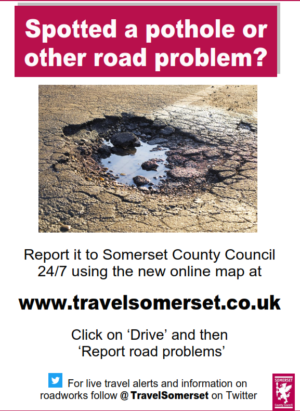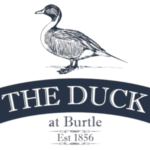About
The Church of St Philip and St James
Built in 1838-9 by Richard Carver, the County Architect and Surveyor. Coursed and squared rubble, freestone dressings, slender buttresses with offsets, coped verges, slate roof; to east a cruciform finial; to west a polygonal stone bellcote with embattled parapet and ribbed stone spirelet with poppy finial, weathervane, each alternating face with bell-opening, wooden louvres. Nave, chancel, south porch, north vestry.
Decorated style
Three bay nave, 2-light windows with simple stone tracery, west end with narrow door opening, above a blank 4-light stone mullioned and transomed window. Simple porch, plain outer door opening, flagstone floor, inner plank door with good iron hinges. Small plain vestry. Single bay chancel, 2-light square-headed windows to north and south; 3-light east window with intersecting tracery. Plastered interior on flagstone, tile and encaustic tile floors; plastered elliptical shaped ceiling to nave; plastered wagon ceiling to chancel; bold ornamental cornices; plastered chancel arch. The fittings are contemporary, including west gallery, pews, font, reader, pulpit, decalogue plaque, altar rails and choir stalls. Jacobean coffin stool. C19 wheeled bier. Stained glass to west window of 1864; other windows with plain square paned leaded lights. Brass memorial plaque of 1892. (Colvin H M, Biographical Dictionary of British Architects, 1978).
History
The present-day Church was built on the site of an old Monastery and was completed in 1839 and dedicated to St Philip & St James on May 1st of that year. Miss Anne Ruscombe Field paid for the building of the gothic style church, she also gave a greater part of the endowment. The rights of patronage were granted to Anne Field and her family by the Right Reverend Lord Auckland, Bishop of Bath & Wells. The land for the building of a chapel was given by Earl Waldegrave.
St Philip & St James was used as a chapel of ease to the mother church of Moorlinch along with the chapelries of Catcott, Chilton-Super-Polden, Edington, Stawell and Sutton Mallet. These chapelries became known as the seven sisters. These seven churches reI1).ained under the Abbot of Glastonbury until 1933.
In October 1840 Anne Field paid a bond of £1,000 to the right Reverend Lord Bishop of Bath & Wells as collateral security for the endowment of Burtle Chapel within the chapelrye of Edington in the parish of Moorlinch. An indenture dated 1840 stated, with the consent of the Lord Bishop of Bath & Wells the rents in the schedule annex to the chapel for the benefit of the Minister and Incumbent and his successors for ever to be received, taken and enjoyed by the minister or incumbent for the time being for his and their own use and benefit.
Another bond of £1,000 was invested in stock and funds or securities in the name of such person or persons or bodies politic as the said George Henry Bishop of bath & Wells shall think proper. The interest to be paid to the minister and his successors of the said chapel for ever for repairs to the chapel and fence of the chapel yard.
An indenture dated 12th August 1848 between Anne Field and The Governors of the Bounty of Queen Anne for the augmentation of the maintenance of the poor clergy for an estate of inheritance of lands and herediments for the residence for a term of two thousand years which commenced about the nineteenth day of November, one thousand six hundred and seventy seven, for the use of the governors and their successors for ever, to be used for the perpetual augmentation of the maintenance of the curate or incumbent of the church at Burtle, also the said Curate or Incumbent shall be at liberty to quarry stone and cut timber for repairs to the parsonage house that is attached to the Church but for no other purpose.Also he can from time to time cut turf for fuel to be used in his own house and not for sale.
On 12th August 1848 by deed Anne Field conveyed land totalling 114 Acres 0 rood 14 perch to the Governors of Queen Anne's Bounty for the use of Burtle Church. She also endowed the church with a sum of money of the rectorial tithes for the minister to buy sacramental elements and books.
On 14th July 1856 Anne Field gave three fields totalling 47 Acres 3 Rood 30 Perch for the maintenance of the curate or incumbent of Burtle Church also three acres of land in Burtle, the rents to be used to educate the children of, and agricultural workers. The perpetual curate of Edington Burtle should always be one of the trustees. (This field was sold to refurbish the kitchen at the school in 1957).
In an Indenture dated 5th July 1864 Anne Field granted and conveyed to Gabriel Stone Poole and his heirs the advowson and perpetual Right of Patronage, Donation and Presentation of and to the Chapel of Burtle in the parochial Hamlet of Edington together with the Glebe Lands, Tithe rent charges and all other rights easements and appurtenances whatsoever to the perpetual or augmented curacy.
On 9th September 1864 Rev'd Edward Cecil Coney paid a bond of £3,000 to Anne Ruscombe Field Patron of the Perpetual or Augmented Curacy of Burtle in the Diocese of Bath & Wells. The Curacy being vacant by the death of the Rev'd William Mathias. Rev'd Coney agreed to resign the curacy in favour of Hugh Ruscombe Poole, son of Gabriel Stone Poole in case he took up holy orders and Anne Ruscombe Field, Patron for the time being of the curacy should wish to present him. Rev Coney to resign within 6 months after being requested to resign. But if Hugh Ruscombe Poole should not be admitted into the priesthood during the life of Rev'd Coney the Rev'd Coney shall not be requested to resign the curacy.
The benefices of Catcott and Burtle were united in 1933. There were some doubts if the union would work as Burtle was over 2 miles across the moors and every winter the road would be flooded and the Vicar who would be resident in Burtle, as there wasn't any vicarage in Catcott would not be able to get to Catcott for the services.
This union lasted until 1974 when Burtle was united with Shapwick and Ashcott. Burtle vicarage was sold and became a boarding house for the boys that attend the school.
The original Organ was placed in the balcony, when it was replaced it was decided to put the new organ where it is today.
The stained glass window was built in memory of the Rev'd William Mathias. The churchyard was extended in the late 1920's early 1930's with part of the stone wall taken down to allow the extension, new iron railings, marking the new boundary.
A Parish collection raised £14-16s-6d and further fund raising (whist drives and a dance), made a total of £45-0s-3d for the extension. Calor gas lights replaced the oil lamps then with the arrival of electricity in 1962, the Calor gas lights were removed.
In the past Burtle Church Choir achieved 2nd place in the Wells Music Festival.
During Rev'd Clatworthy's time, £200 was raised for the complete renovation of the church. In 1988 the bell tower was repaired and the external walls re-pointed. There were new slates put on part of the roof. In 1988 the guttering and down pipes were painted, some of the ladies of the village made the hassocks. In 1989 the church received a prayer desk from the Lady Chapel of St Francis of Assisi, Bridgwater. It was dedicated on the 9th July by the Rev'd Amott.
The Priory of Burtle Moor
Some time in the second half of the 13th century, a hermit built himself a lodging on the moor, part of the possessions of the Abbey of Glastonbury held by Godfrey de Edington. It was situated on what was known as 'Sprawlesmede,' and the hermitage is referred to as the priory of the Holy Trinity, the Blessed Virgin Mary and St. Stephen of Burtle, Burcle, or Sprawlesmede. This settlement was formally endowed by William de Edington, son of Godfrey de Edington, and the grant was confirmed by Robert, the son of William.
In the 'Secretum Abbatis' (fn. 185) of Abbot Walter de Monyngton in the Bodleian Library, the private register and charters concerning the Abbey of Glastonbury, made by order of that abbot (1341–72), there is a series of six charters concerning the foundation of this priory, copies of which are in the Monasticon. The first is a confirmation by Archbishop Boniface (1245–73), concerning the patronage of the priory of Sprawlesmede. It recites the letter which William son of Godfrey, in his own and in his son's name, wrote to Bishop William Button (1267– 75) declaring his intention to found a priory as a memorial of himself and his wife Alice, and giving, for that purpose, to Brother Walter, the hermit, that house which he had in Sprawlesmede, with 10 acres of land which the predecessor of that Walter had marked off with a ditch. The priory was to enjoy an eleventh part of the profits of his mills at Edington and was to consist of the said Walter and his successors with two brethren who were to worship God in the chapel of the Holy Trinity, the Blessed Virgin Mary, and St. Stephen in Sprawlesmede. He added also half a virgate of land in his manor of Edington, namely, 5 acres, and the cottage which Hugh Buterestake held, and 5 acres then held by William de Pedewell, with Walter Sperling's cottage and croft, and 5 acres of demesne. Then follow two documents dated, however, 14 Edward I (1285), transferring through Antony de Bradeneye the endowment of the priory to John of Kent, Abbot of Glastonbury (1291–1303), (fn. 186) and to his successors and the convent at Glastonbury.
The next charter (fn. 187) is a statement that the priory, of which Stephen is the prior, though in the parish of Moorlinch, is subject to none but the Abbot and convent of Glastonbury. This charter is dated 20 January 1270. The above seems to prove that Walter succeeded to the hermitage made by Stephen, and as Stephen was prior in 1270 Walter belongs to the time of Abbot John de Taunton or Abbot John de Kent. On 23 September 1312 (fn. 188) Bishop Drokensford quashed an election of Nicholas Drake, canon of this Augustinian priory as prior, because, on scrutiny, he had found that the election which was dated in May had really taken place in September, and so the collation had lapsed to himself as bishop. He thereupon, in his own right, appointed Nicholas Drake as prior.
On 25 November 1343 (fn. 189) Bishop Ralph of Shrewsbury wrote to Robert de Cadecote, since the appointment had devolved on the bishop, appointing him as prior of Burtle, and again in February 1349, (fn. 190) Robert de Baltesborow being dead (most likely of the plague), Bishop Ralph confirmed the election as prior of William de Fulbrok, a canon of Burtle.
The Valor in 1535 (fn. 191) reports the priory as worth £6 5s. 2d., and Stephen Stowell is mentioned as prior.
Past Vicars
Rev. Trish Ollive (2008 - 2014) Rev Joan Rowe (1996 - 2007) Rev. H Leslie Baxter (1974 - 1996) Rev. Frank E Stubbings (1964 - 1974) Rev. A C Hoskin (1951- 1964) Rev. D V Clatworthy (1947 - 1951) Rev. A S N Buchan (1937 - 1946) Rev. Leigh Philips (1912 - 1937) Rev. Thomas Lewis (1893 - 1912) Rev. A J Yarranton (1882 - 1892) Rev. John E Underwood (1872 - 1882) Rev. G C Coney (1864 - 1987) Rev. William Mathias (1844 - 1864) Rev. Mark W W James (1843 - 1844) Rev. J Cabe Browne (1841 - 1842)
Meanings of some of the words used
Advowson - The right of presenting a clergyman to a benefice in the church of England Augmentation - To Increase Annex - To Unite, To bind to. Collateral - Additional security Consecrate - To declare sacred. Dedicate - Consecrate for a holy purpose Indenture - A Contract, A written agreement between two or more persons. Politic - Prudent, wise, shrewd, advisable. Residue - Something remaining, left over.
Priors of Burtle
Stephen, occurs 1276 (fn. 192)
Walter, c. 1275 (fn. 193)
Nicholas Drake, appointed 1312 (fn. 194)
Robert de Cadecote, appointed 1343 (fn. 195)
Robert de Baltesborow, died 1349 (fn. 196)
William de Fulbroke, elected 1349 (fn. 197)
Thomas Hornblouton, elected 1409 (fn. 198)
John Romney, elected 1420 (fn. 199)
Thomas Bone, 1463 (fn. 200)
John Faireman, 1467 (fn. 201)
John Bennett (fn. 202)
Thomas Vele, 1488 (fn. 203)
William Badcock, 1499 (fn. 204)
Stephen Stowell, 1516 occurs 1535 (fn. 205)
From: 'Houses of Augustinian canons: The priories of Bruton and Burtle Moor', A History of the County of Somerset: Volume 2 (1911), pp. 134-39. URL: http://www.british-history.ac.uk/report.asp?compid=40932. Date accessed: 28 October 2006.






